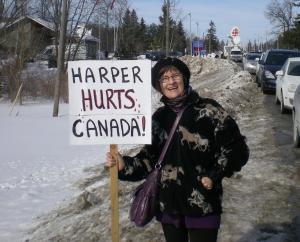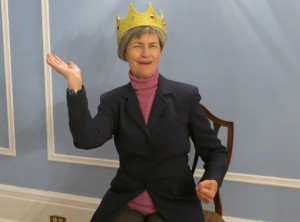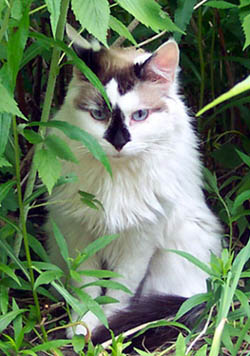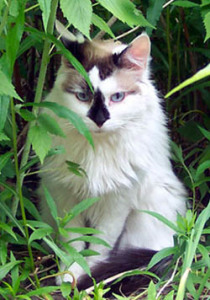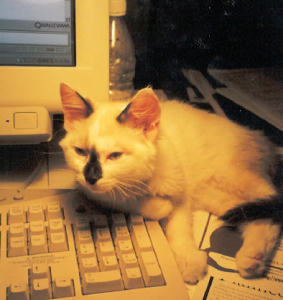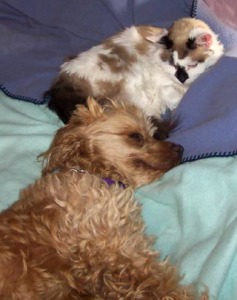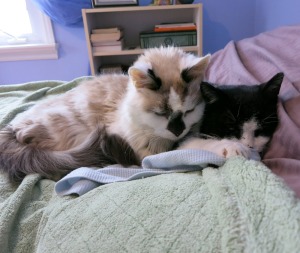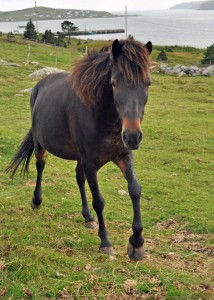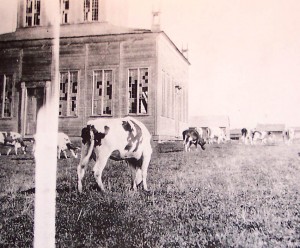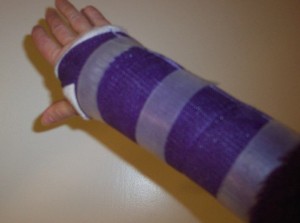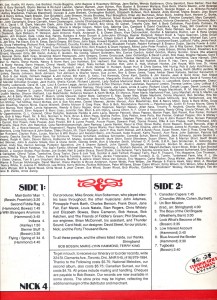Most of you know by now that I’m a dismal failure at the holiday greetings thing. I’m a dismal failure, in fact, at the whole holiday thing in general. I’m sorry for all the cards I haven’t sent, the gatherings I didn’t get to, the Christmas dinners I’ve politely turned down.
After years of feeling guilty about this, I figure it’s time to explain a little, though be forewarned: this gets personal, and dark. If you’re one of those for whom the holiday season is three weeks of pure joy and love and spiritual uplift, then maybe save reading this for, say, late January.
Wreck the halls
When I was a kid Christmases must have been fine, though I remember almost nothing of them, probably because by the time I was ten we’d lived in half a dozen places – not long enough for clear memories to accrue to or become associated with a particular home or church or town.
By the following Christmas, though, when I was eleven, I was finally old enough to understand that my family had a problem.
My father was an alcoholic, not the goofy, happy kind, but the other kind. By then my mother was drinking too, I think in a blind, desperate response to his drinking. When she drank, however, she wasn’t scary like he was; she was mostly just sad. From then on, Christmases in our home were a mix of hoping-against-hope that this year would be different, and then dread and deep hurt and bitter disappointment because they never were.
The midnight drear
After I left home, I decided to recreate Christmas with new-found friends, and I recall some pleasant gatherings. But with every passing year I had to admit that, deep down, the holiday season depressed the hell out of me.
For one thing, I’d lost my Christian faith and didn’t miss it, so it was hard to celebrate, as my feminist self put it, the birth of yet another male god. The rampant consumerism didn’t help either. Neither were turkey dinners a draw for a vegetarian like me. And years of psychotherapy were apparently not enough to erase the ghosts of Christmases past. Behind every Christmas carol, every Christmas treat, every Christmas tree, lurked the shadows of painful family memories.
My parents had divorced when I was twenty-three, and both lived thousands of miles away, so thankfully I wasn’t expected to go home for the holidays. For me, the best Christmases soon became the non-Christmases: when my two sisters weren’t living in Toronto and I was free from obligations. I loved doing the “Jewish Christmas” thing with my Jewish friends: dinner at a Chinese restaurant followed by a big, escapist, Hollywood movie.
A child is born
But when my sister Denise moved back here, with her four-year-old daughter, Lacey, I had a new reason to try to share my niece’s innocent joy in Santa and presents and decorating the tree. It sort of worked — for a while. When Lacey was fourteen, Denise got cancer. She died seventeen months later. But Lacey loves Christmas, as does my other sister, Jacq (who’s succeeded far better than I at ignoring the past), so for their sakes I soldiered on, pretending as best I could every Christmas, despite feeling utterly hollowed out by grief over the loss of Denise.
As Lacey got older, though, she began to see through me. She knows the truth now, but insists I go through the motions anyway. And because I love her and because I promised my sister as she lay dying that I would always be there for her child, I do.
Lacey now has a two-year-old daughter of her own, and being grandma-by-default, I know when they move back to Toronto next year that I’ll be called upon to pretend even more convincingly for the sake of little Elsie. I will do my best. But I’ll secretly be relieved each January when the whole holiday thing is over, when the last red-and-green ornament has been put away and the last piece of gift wrap has been recycled.
Five gold rings
Speaking of recycling, there’s something I will confess – perhaps the one redeeming feature of my rather dark tale. The only thing about this time of year that resonates for me is winter solstice, because if I do have any spiritual bent at all, then I’m a pantheist. I believe in our poor little planet and all its life forms, except perhaps us humans, because we’re reprehensibly wiping out other life forms at an alarming rate and destroying lakes and forests and oceans and, well, just about everything.
Darn, this is getting dark again. But after all, that’s what winter solstice is about – the longest night of the year. Which is why we counter with light: candles, lanterns, crackling fires, little tin stars. And twinkling lights of all colours, wound around branches and the edges of windows and rooftops.
So I’m coming out as a lover of those lights. Of all things sparkly, of tinsel and shimmer and dazzle and gleam. Even things that border on tacky, like glitter and sequins and rhinestones in shades of amethyst, sapphire, aquamarine. They make me happy, though I can’t explain why. It’s my little Christmas secret.
I think humans may well be going through the longest night of our existence as a species, but sadly it’s of our own making. We need a gargantuan shift to change things. We need far fewer people on this planet and a far smaller appetite for those other shiny things, iPads and huge televisions and cars. For meat. For oil. For guns. For the shiny useless stuff like gold and diamonds that we tear violently out of the earth, destroying vegetation and animal life and ancient communities as we go.
Star of night
We are but one small planet in a universe of billions of other planets and stars. Maybe we just don’t matter. But it seems wrong not to try to turn the tide. What about my grandniece and all those other babies that we humans continue to blithely produce at unsustainable rates? What kind of world will they inherit if we don’t?
And yet all I can offer in the face of our giant global fail is my little ecological garden that needs no pesticides and almost no water, that tries to encourage the shrinking bee population with its native blossoms, and that grows tomatoes, lettuce, and herbs to feed me. My recycling and my wearing of sweaters that are twenty years old. My near-vegan diet. My guilt the odd time when I drive my car to Toronto instead of taking public transit. And all the petitions I sign and letters I write about environmental concerns that fall on the deaf ears of our current despotic and destructive government. (Canada just withdrew from the Kyoto Accord. How dark is that?)
But every year at this time I also hang two tinsel garlands over two windows and I set out three little glittery, tree-shaped ornaments, to gently rage against the dying of the light. A garland each for Lacey and Elsie. A tree each for me and my two sisters. These little bits of sparkle cheer me and give me a disproportionate amount of pleasure. They won’t stop the darkness. They won’t save the earth. But if we must go down, if we must heat up the planet till it burns to a cinder, then I’ll go down in flames – and sequins.
